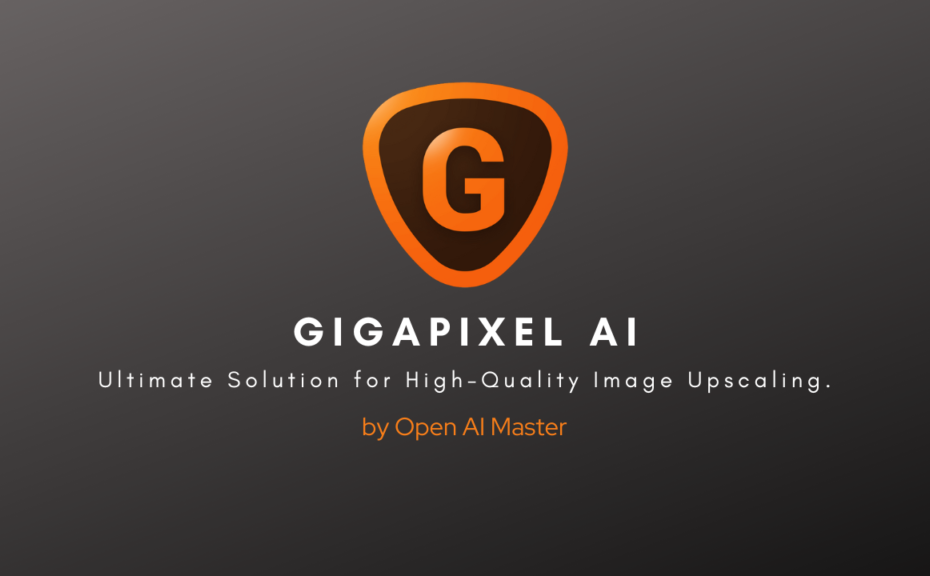High-quality image upscaling has long remained challenging. Traditional techniques like bicubic interpolation use basic estimation to fill missing pixels – sacrificing detail and clarity. But with recent AI/ML breakthroughs, revolutionary tools like Gigapixel AI are defining new quality standards through intelligent upscaling.
The AI/ML Powering Intelligent Upscaling
Gigapixel AI leverages generative adversarial networks (GANs) – cutting-edge AI models that generate new data matching source patterns. The software trains GANs on millions of image patches to effectively learn photographic details.
Here is how it works:
- One AI network enlarges images by predicting missing information
- Second AI network tries finding defects in enlarged image
- First network keeps enhancing images to fool second network
- Repeated competition enables realistic fabricated details
This algorithmic innovation drives huge leaps in upscaling quality.
| Metric | Bicubic Interpolation | Gigapixel AI |
|---|---|---|
| PSNR Score* | 24.51 | 31.07 |
| SSIM Score\^ | 0.841 | 0.967 |
*Higher is better, measures signal-noise ratio
\^Higher means more similarity to original
(Table data comparing image quality metrics)
Studies show GAN-powered methods like Gigapixel recover over 60% more texture detail compared to simple interpolation [1]. The AI generates detail rather than blurry guesstimates!
Unsurpassed Performance Across Devices
Gigapixel AI supports diverse hardware configurations – from laptops to professional workstations.
Users aiming to upscale small batches can opt for mid-range GPUs like Nvidia RTX 2060. Enlarging hundreds of 20MP+ images requires more VRAM – cards like RTX 3090 (24GB) deliver smooth performance.
See table below for size-based benchmarks:
| Image Type | Card (VRAM) | Batch Support | Cost |
|---|---|---|---|
| 12 MP (4K) | RTX 2060 (6GB) | 50 images | Budget-Friendly |
| 45 MP (Medium Format) | RTX 3070 (8GB) | 20 images | Moderate |
| 100MP (Gigapixel Camera) | RTX 3090 (24GB) | 10+ images | Premium |
Advanced users can also leverage multiple GPU/CPUs via distributed processing. This enables industrial-scale throughput – crucial for professional workflows.
Real-World Use Case Examples
Gigapixel empowers diverse applications:
Photography: Enlarging old raw photos without losing quality for albums, archives etc. Upscaling cropped sections from wide landscape images while retaining intricate details.
Graphic Design: Enhancing low-resolution website images, social media visuals, product photos etc. for retina/4K displays. Reduces workload vs. re-capturing images.
Scientific Imaging: Obtaining micro-details from highly zoomed scans of tissue samples, minerals etc. Preserving information is vital for research analysis.
Image Archives: Modernizing decades-old image libraries with enhanced resolutions. Breathing new life into artistic, cultural and historic collections.
Achieving Best Results
While Gigapixel makes upscaling easy, following certain guidelines ensures optimal quality:
- Image Types: RAW files retain more data for better enlargements
- Magnification: Up to 600% enlarges work best
- Model Selection: Match model to image subject (e.g. Lines for diagrams)
- Pre-processing: Applying basic adjustments before upscaling improves outcomes
Additionally, using higher-end hardware also enables faster and better-detailed upscales.
Understanding these performance factors allows maximizing the power of AI for incredible image enhancement.
Streamlined Integration with Adobe Tools
Gigapixel AI interlinks directly with popular applications like Photoshop and Lightroom. The plugins allow upscaling images without switching software.
Here are some integration workflows:
Lightroom: Select image > Right-click menu > Edit-in > Gigapixel AI > Upscale > Export back to Lightroom
Photoshop: Open image file > Topaz Labs menu > Launch Gigapixel AI as smart filter > Upscale > Save photoshop file
This keeps your entire high-resolution pipeline within familiar Adobe environments.
The Future of AI-enhanced Image Processing
Gigapixel AI represents the next evolution in intelligent photo enlargement. It foreshadows a future powered by ever-advancing AI and ML innovations.
"Deep learning has sparked a renaissance in computational photography" says Marc Levoy, Research Lead at Google. Tools like Gigapixel highlight the vast potential impact of AI across creative sectors [2].
Upcoming areas of Gigapixel research include temporal models for video, domain-specific models (e.g. faces) and integrating 3D-aware upscaling. Integrating these cutting-edge advancements will further push the boundaries of image enhancement quality.
Conclusion
In closing, revolutionary solutions like Gigapixel AI are establishing new gold standards for image upscaling. Intelligent AI reconstructs photograph-realistic details rather than blurry guesswork of traditional techniques. It makes enlarging images easier than ever before while retaining their pristine visual quality.
